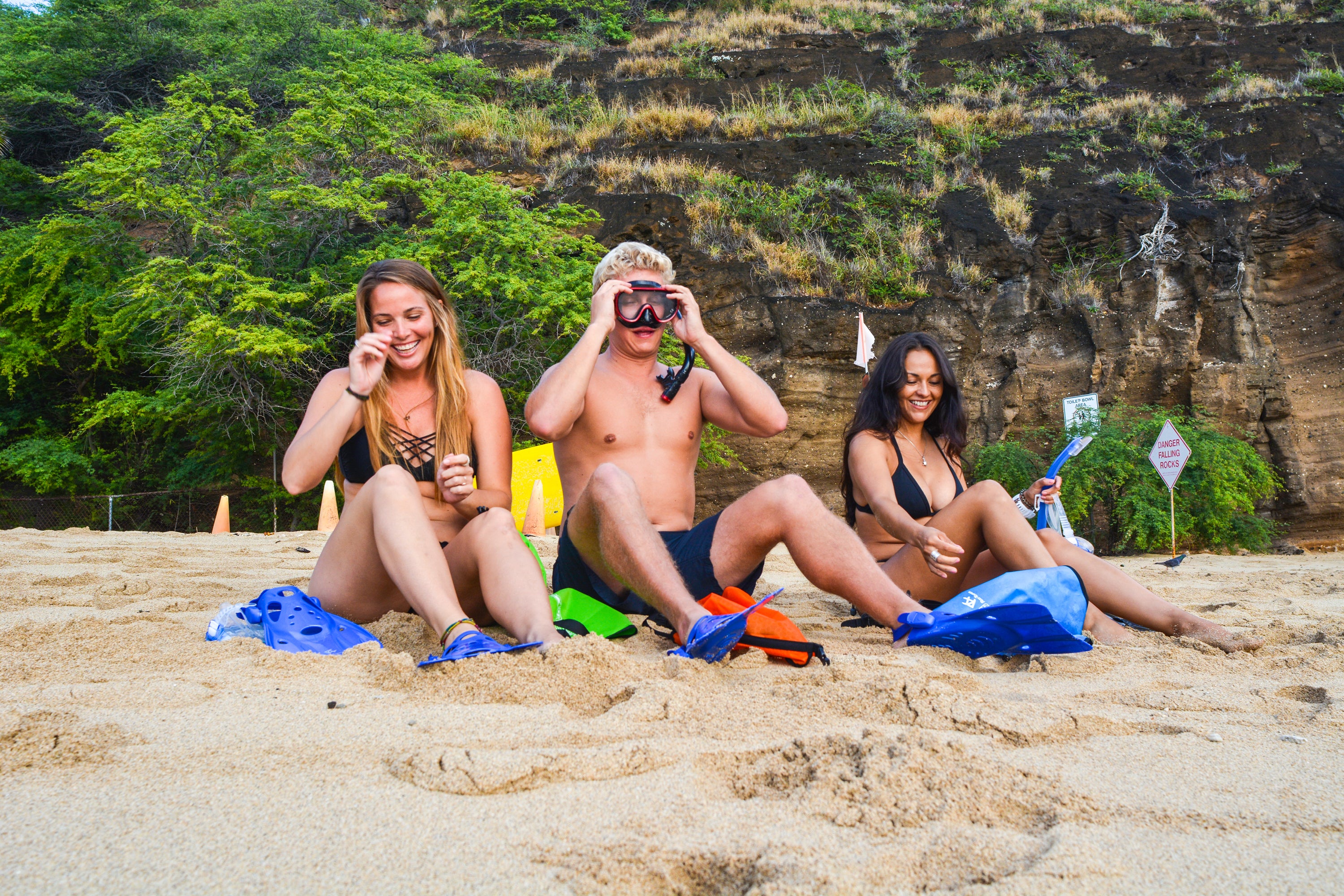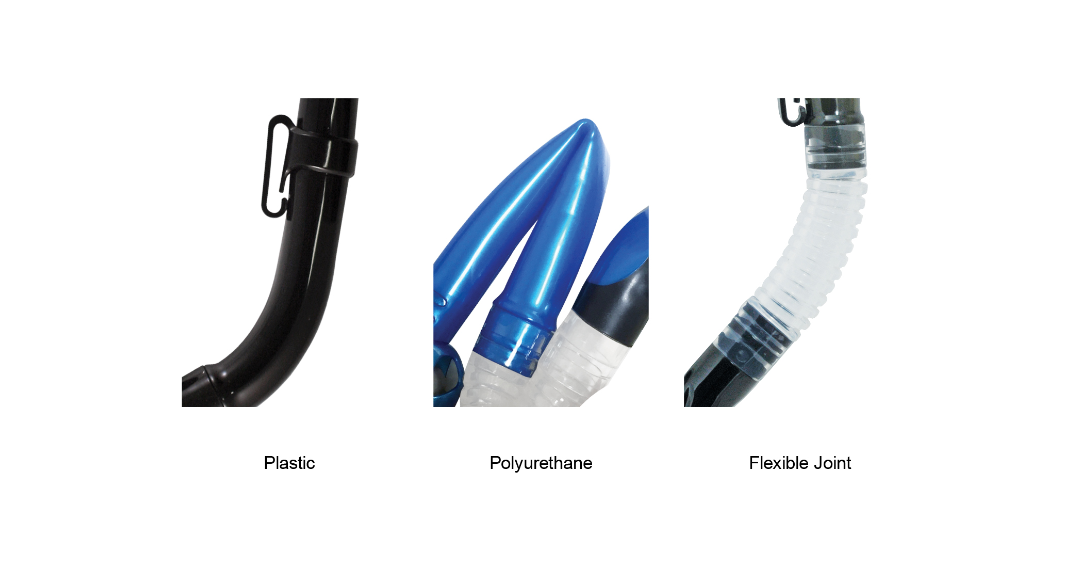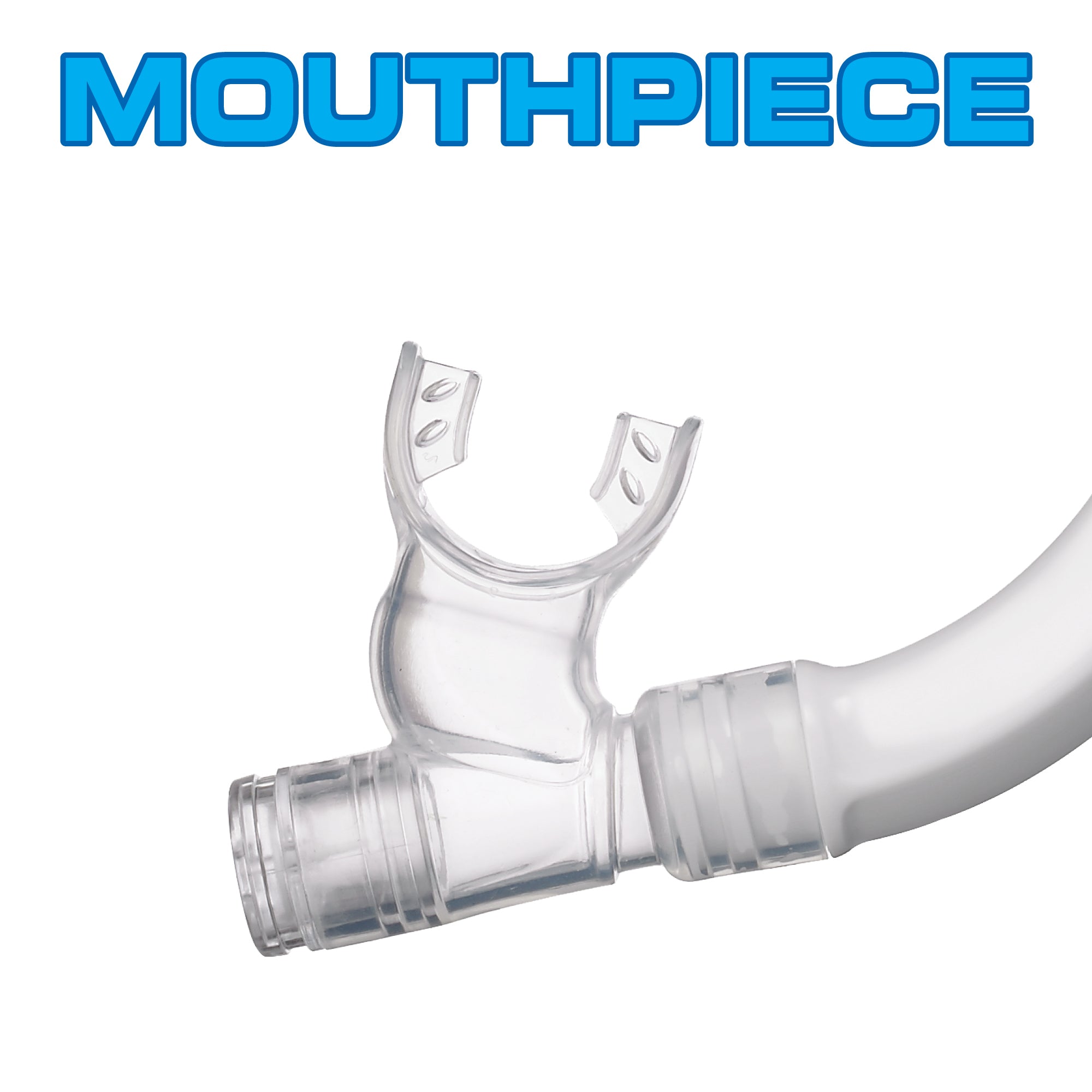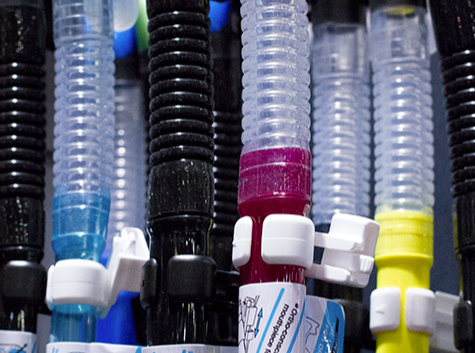Snorkel Technology


Types of Tops
-
Semi-Dry Top
A semi-dry top helps to prevent water from entering your snorkel through the top opening of your snorkel. This may be achieved with specially designed vents and covers that angle or direct the water away from entering through the snorkel opening. This style snorkel top will not keep water from getting into the snorkel when fully submerged. It must be cleared of water by firmly exhaling.
-
Dry Top
A dry top snorkel often has a dome built around the top of the snorkel which houses a floating valve. When water makes contact with the top of the snorkel, it activates the floating valve, closing it off to seal out any potential of water entering the snorkel tube. This feature works well when encountered with splashing, rough water, or even when diving below the surface. Remember, this does not allow you to breath underwater.
-
Open Top
The “classic”, the “J-style”, and the “traditional”, are all names this style of snorkel is known by. This snorkel top is typically found on basic tube style snorkels. These are usually entry level snorkels and often used as a backup snorkel. It is essentially a tube with a mouthpiece attached to one end. This open top style snorkel is usually found on snorkels that don’t offer a purge valve, making them the most difficult to keep water out.

Types of Tubes
-
Plastic/Hard
Plastic tubes can nicely contour to your face and are easy to locate if you ever lose your grip on the mouthpiece. A hard tube is also great because it won’t squeeze or collapse under pressure.
-
Polyurethane
Polyurethane tubes can be extremely flexible, allowing you to fold them up to store in your pocket as a backup.
-
Flexible Joint
Flexible Joints, also known as corrugated joints, allow the snorkel to bend easily giving it more mobility when following your head movements. The mouthpiece will naturally drop away from your face and not impair your vision.

Other Features
Keep swiping for information on mouthpieces, valves, & other attachments.

Mouthpiece Options
Silicone and PVC are options for mouthpiece material. Silicone is more durable and long-lasting than PVC. Mouthpieces come in different sizes, so test them out to make sure it’s the right fit for you. It should naturally sit in your mouth without too much strain or pressure on your jaw. Removable mouth pieces allow you to replace them when they wear out.

Purge Valves
Purge valves are included on most snorkels these days. The purge valve is a one-way valve commonly found at the bottom end of the snorkel. The purge valve makes it easier for a snorkeler to clear out any water that may have entered the snorkel tube. With little effort, exhale and the water is easily forced out through the valve. This expends much less effort than having to blow the water out through the top of the snorkel.

Mask Strap Attachments
Single piece attachments have a single piece attachment that the mask strap can easily slide into and be removed at any time. Two piece attachments have a quick-connect feature to it. One part will attach to your mask strap while the other remains attached to your snorkel.
One Final Note...
-
Cautions Before Use:
- Check if the drain valve is firmly attached (for snorkels that include a drain valve.)
- Make sure there is no dust or sand caught in the drain valve.
- Check for damage to the mouthpiece.
- The mask and snorkel must be attached properly to avoid from separating while snorkeling.
- For children, ensure that the snorkel is size appropriate.
- If the water in the snorkel is not drained properly, you may accidentally swallow water while snorkeling.
-
Care and Maintenance:
- Rinse your snorkel in fresh water after each use and let it air-dryin the shade.
- Store in a cool, dry place, out of direct sunlight. The sun, over time, can cause the plastic material to weaken and crack.
- Check for any defects.
- Biting down on the snorkel mouthpiece too hard may damage and break the mouthpiece in pieces.
- The snorkel may not return to its original shape if the snorkel is bent too hard or stays in a bent shape for too long.
